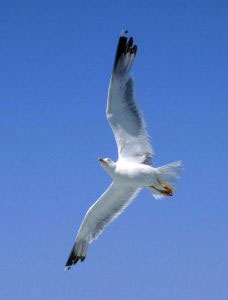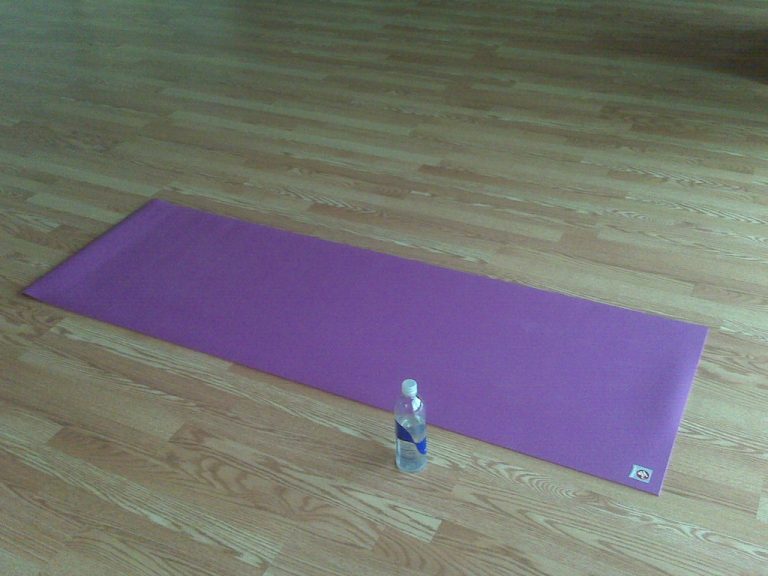Jala Neti – The Yoga Practice of Saline Nasal Irrigation
Jala Neti, or nasal cleansing using warm salty water, is a very ancient technique which has been passed on for thousands of years by the Yogis for both physical as well as deeper spiritual benefits. Now is possibly a time of the greatest need for such a practice by modern people. With the ever increasing incidence of respiratory illnesses such as asthma, allergies, hayfever, sinusitis, colds, influenzas, etc, as well as the rapid degeneration of spiritual consciousness in some sections of society, the practice of Jala Neti could serve as a panacea for helping to improve the lives of many people. Neti is a practice which is very beneficial to the cleanliness of the eyes, ears, nose, throat, lungs, as well as the thinking processes.
Benefits of Neti
· Neti removes all the dirt and bacteria filled mucus from within the nose.
· It also helps to drain the sinus cavities. This, in turn, will help to reprogram the body’s natural mechanisms against nasal infections such as hayfever, allergies, sinusitis and other upper respiratory complaints like sore throats and coughs, post nasal drip, inflammation of tonsils and adenoids.
· It is beneficial for illnesses such as asthma and bronchitis as it reduces the tendency for mouth breathing by freeing the nostrils of mucus.
· It has a cooling and soothing effect on the brain by drawing out excessive heat, and is therefore beneficial for headaches, migraine, epilepsy, temper tantrums, hysteria, depression and general mental tension.
· Neti is of great benefit for problems associated with the eyes. It helps flush the tear ducts, encouraging better vision and gives a sparkle to the eyes.
· It can be beneficial for certain types of ear disorders such as middle ear infections, glue ear and tinitis.
· Neti improves sensitivity of the olfactory nerves, helping to restore lost sense of smell, and thereby benefits the relationship with taste and digestive processes.
· It has subtle effects on the pineal and pituitary glands which control the hormonal system. This has a harmonizing effect on emotional behaviours.
· Neti affects the psychic centre known as Ajna Chakra which helps in awakening higher states of meditation.
· It helps to stimulate better powers of visualisation and concentration and gives a feeling of lightness and clarity to the mind.
· Neti is excellent for those trying to give up smoking. Since it reduces the tendency for mouth breathing, Neti re-sensitises the nose to the actual pollution of ingesting smoke, thereby de-programming the brain of the physical and psychological addiction.
It is well known that drinking milk and consuming other dairy products can cause nasal blockages. Also it is known that this trapped mucus is an excellent breeding ground for viruses and other infectious disease.


Anatomy of the Neti Practice
For those who may not have much idea of the internal workings of the nasal cavities, it may seem like a stupid or even a dangerous thing to pour warm salty water through one’s nose. But when examined with an open mind and a simple picture of the physiological structures involved, fears and misunderstandings can be cleared up. The first line of nasal defence are the tiny hairs called “cilia” which should trap larger particles entering the nose. These cilia are usually cleansed by the act of normal breathing and by blowing the nose, but sometimes, due to a gradual build up of dirt they can become clogged and may requiring washing out. The whole of the nasal passages from nose tip to throat (and beyond) are covered with a layer of mucus. This mucus is secreted from within the mucus linings and its function is to trap smaller foreign particles and bacteria. The dirty mucus is normally blown out, snorted and coughed out or swallowed. The sinus passages are an even finer mechanism of filtering which, if infected, secrete a runny mucus to evict the germs. This is generally called sinusitis and can be a short term symptom or a chronic condition. Neti nose cleansing activates all the mucus membranes in the body, also in the stomach and in the eyes.
Professor Paul Stoksted states: “The movement of the cilia hairs can be paralysed by virus and allergy provoking substances, and also when it dries out, the mucus becomes tough and crusty and looses its function. Cleansing with salt water keeps the mucus moist, the cilia hairs are stimulated and encrustations, dust as well as allergy provoking substances are removed”.
How to prepare the Saline Solution
The keys to comfortable nasal cleaning are correct salt concentration ratio to water and water temperature. The solution should have the same salt concentration as your tears (0.9%) and be warmed to normal body temperature or a bit warmer. If the salt concentration is too low or too high, the experience can be very unpleasant (like getting water up your nose when you are swimming). Water that is too cool will cause the nasal membranes to swell which is uncomfortable, defeating the purpose of the wash. Water that is too hot will burn the sensitive nasal mucosa.
The solution should be prepared with distilled or filtered water and a pure, non-iodized salt. The amount of salt you need to add will depend upon both the volume of water you use and the texture of the salt you select (the coarser the grind, the more you need). You will need a Neti pot, a squeeze bottle (empty coke bottle) or a glass can also be used with practise. I like to use the coke bottle because it is 16 ounces and then I can mix all together into the one container and shake it up to dissolve the salt. Neti pots are normally large enough as well to contain the full amount of water needed for one cleansing. (A Neti pot is a small ceramic vessel, shaped like an Aladdin’s lamp, that is specifically designed for nasal cleansing, while convenient to use it is not necessary.)
Mix the following together:
1 scant teaspoon salt
16 ounces (500 ml) warm water
How to do Nose Cleansing – Neti
Do neti over a sink. Hold the pot in one hand and place the spout against one nostril, so that it fits tightly. Lean forward, breathe relaxed through the mouth and turn the head to one side. Now the water will flow by itself, in through one nostril and out of the other.
When half of the water has run through one nostril, gently blow out any remaining water and mucus. Then repeat this process in the other nostril.
In the end the nose should be dried. You bend forward and let your head hang loosely down, so that the remaining water can run out of the nose. Close one nostril with the index finger and turn the head alternating from side to side. Blow gently (not forcefully) through one nostril at a time – until the nose is dry. This exercise to dry the nose is an important part of nose cleansing, and should be done thoroughly every time.
Once learned, the practise can be done in about 3 minutes, and is easily intergrated into a daily routine of body cleansing such as showering or cleaning of the teeth.
Note: After nose cleansing one can benefit from breathing exercises, such as “Kapalbhati” – these cleanse the lungs and the respiratory passage and supply the blood with more oxygen. As a harmonic conclusion of such a small program, you can do “The alternate nostril breathing” to gain an even better balance and clarity in the brain.For further information see the links section below.
Difficulties:
Don’t expect that this feels natural the first few times you do it. Stick with it at least a week, twice a day, until the your nasal passages have cleared of some mucous as well as giving you time to learn how to do this. Many people have chronic mucus blockages due to allergy, diet or many other causes, and it can take time to clear it. If after a week you are still experiencing difficulties you may want to look up a yogi instructor to find out if you need to adjust how you are doing this. It is also possible (although highly unlikely) that you have a nasal obstruction and might need to have an examination by a medical professional to ascertain the cause of your difficulty.



